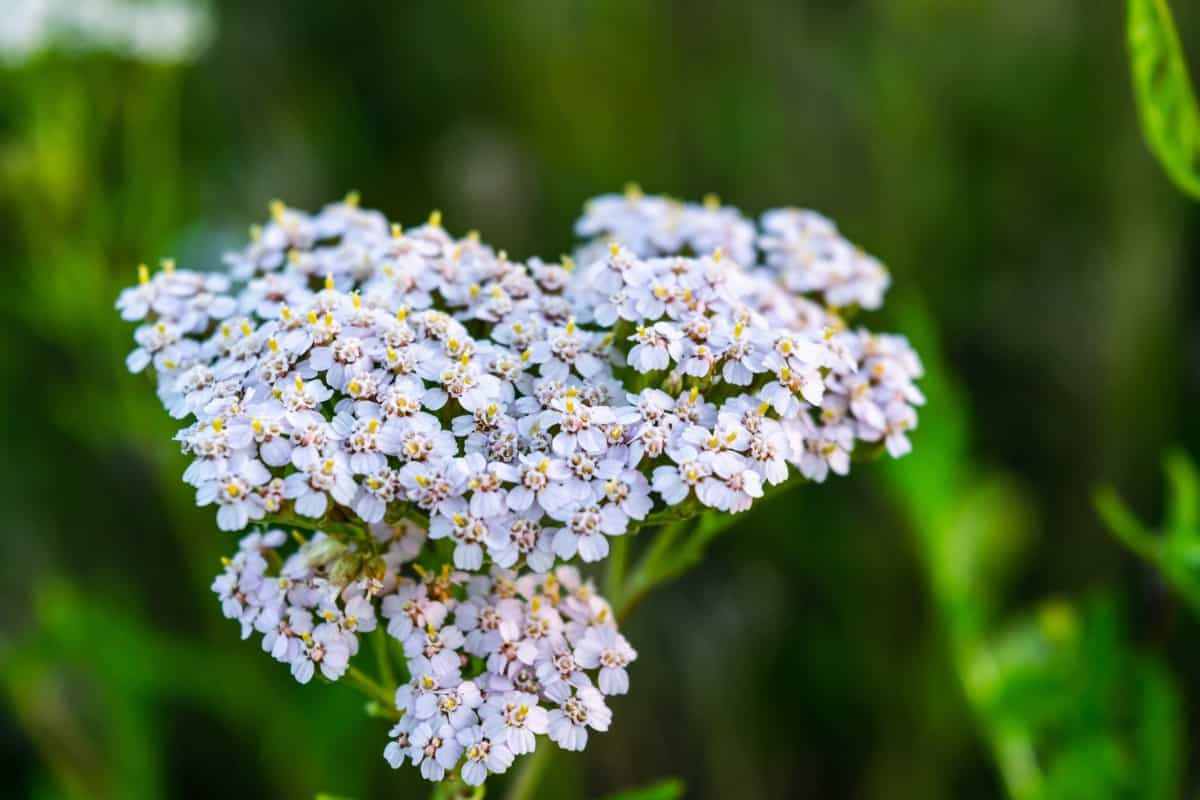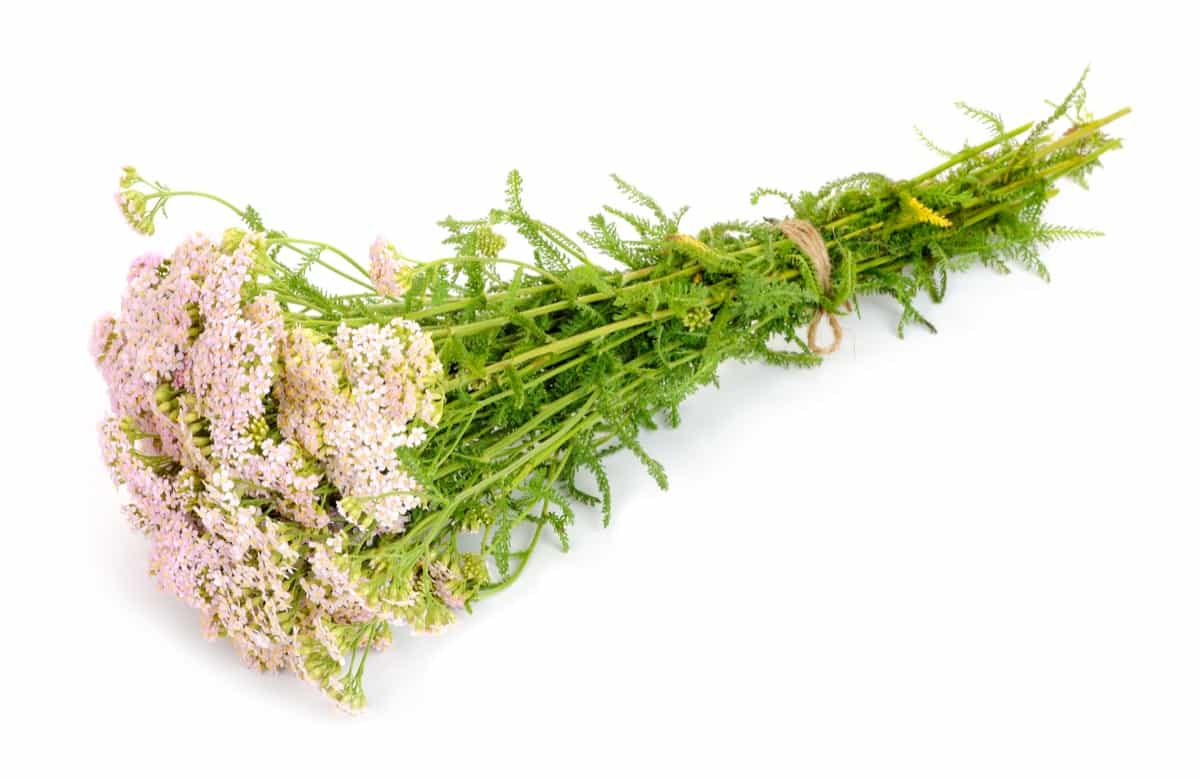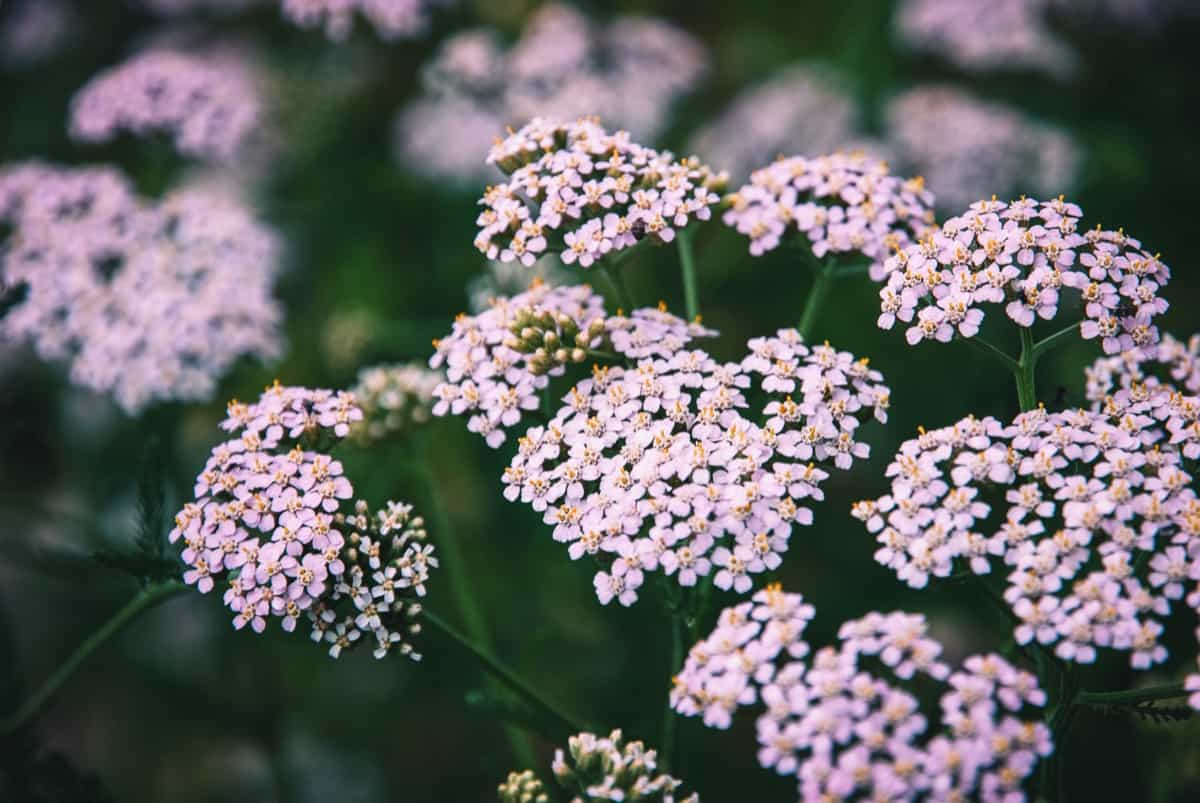Yarrow, scientifically known as Achillea millefolium, is a versatile and resilient plant with a special place in North American folklore and traditional medicine. This herbaceous perennial boasts feathery leaves and clusters of tiny flowers in various shades of white, yellow, pink, or lavender. Growing organic Yarrow allows you to enjoy the beauty of its flowers while supporting local pollinator populations.

How to Grow Organic Yarrow
Organic Soil Preparation for Yarrow Growth
Yarrow thrives in many soil types but prefers well-draining soil with a pH levels of 4.7 and 8.0. How do you prepare the soil for Yarrow? To begin, test your soil’s pH level using a simple kit available at most garden centers or online. This will help you determine the acidity or alkalinity of your soil, ensuring that it falls within the ideal range for Yarrow.
If your soil’s pH is too low (acidic), adding lime can help increase it to the desired level. On the other hand, if your soil is too high in pH (alkaline), incorporating elemental sulfur or acidic organic matter like compost can lower it appropriately. Once you have adjusted the pH to an optimal range, consider enriching your soil with organic matter.
Step-by-Step Guide to Growing Organic Yarrow
- Choose the right location: Yarrow thrives in full sun but can tolerate partial shade. Ensure the soil is well-drained, as Yarrow does not like wet feet.
- Prepare the soil: Prepare the soil by removing weeds or debris before planting. Yarrow prefers slightly acidic to alkaline soil with a pH ranging from 4.7 to 8.0.
- Start from seeds or divisions: You can either start Yarrow from seeds or purchase young plants from a nursery. If starting from seed, sow them directly into the prepared soil and cover lightly with compost.
- Watering: Once planted, water your Yarrow regularly until it becomes established. Afterward, Yarrow is quite drought-tolerant and does not require excessive watering.
- Fertilization: Organic fertilizers such as compost or well-rotted manure can be applied during early spring to promote healthy growth.
- Pest control: Yarrow is pest-resistant but may occasionally attract aphids or powdery mildew on its leaves. Use natural remedies like neem oil spray or insecticidal soap if needed.
- Dividing and pruning: Every few years, divide mature clumps of Yarrow to maintain their vigor and prevent overcrowding.
In case you missed it: How to Grow and Care for Yarrow: Planting Instructions for Best Blooms

Information about Growing Organic Yarrow
| Common Name | Yarrow |
| Botanical Name | Achillea millefolium |
| Family | Asteraceae |
| Plant Type | Perennial |
| Sun Exposure | Full |
| Soil Type | Sandy, loamy, clay, well-drained |
| Soil pH | Neutral |
| Bloom Time | Summer, fall |
| Flower Color | White, yellow, pink, red, purple, orange |
| Hardiness Zones | 3-9 (USDA) |
| pH | 4.7 and 8.0 |
Watering Techniques for Organic Yarrow Cultivation
Watering is a crucial aspect of organic Yarrow cultivation. While these plants are known for their hardiness, they still require regular watering to thrive. It’s important to water deeply but infrequently. Yarrow plants have deep roots that can access water from lower soil levels.
Watering deeply encourages root growth and strengthens the plant’s ability to withstand drought. Check the soil moisture level to find how often you should water the Yarrow. Stick your finger into the soil near the plant base. If it feels dry, it’s time to give them a good soak. Be mindful not to overwater your Yarrow plants, which can lead to some issues.
Natural Fertilizers for Organic Yarrow Growth
- Compost – It is an excellent choice for feeding your organic Yarrow. It enriches the soil with essential minerals and improves its structure, promoting healthy root development. Spread compost around the base of your Yarrow plants, ensuring it doesn’t touch the stems.
- Manure tea – It is an excellent natural fertilizer for organic Yarrow, and it is made by soaking well-aged animal manure in water for several days. This nutrient-rich liquid can be diluted with water and applied directly to the soil around your Yarrow plants.
- Seaweed extract – Packed with micronutrients and beneficial hormones, this organic fertilizer enhances plant growth and strengthens resistance to pests and diseases.
- Bone meal – It is a slow-release phosphorus source for your Yarrow plants. Phosphorus promotes strong root growth and abundant flowering.
Organic Pest Control for Yarrow Plants
Look for any signs of pests early on, such as chewed leaves or wilting stems on Yarrow plants. By catching the problem early, you can take action before it becomes a major issue. If you do notice pests on your Yarrow plants, one effective method is handpicking them off manually. This may seem tedious, but it can be quite satisfying and effective in controlling small infestations.
Another natural solution is insecticidal soaps or oils specifically formulated for organic gardening. These products are made from plant-based ingredients and work by suffocating or dehydrating pests without harming beneficial insects. Introducing beneficial insects into your garden can also help control pest populations by feeding on them. You can attract these helpful bugs by planting flowers that provide nectar and pollen nearby. Additionally, practicing good garden hygiene is vital in preventing pest outbreaks.
In case you missed it: How to Grow Organic Sage: A Step-by-Step Guide to Planting, Care, and Harvest

Pruning and Dividing Organic Yarrow Plants
Pruning organic Yarrow plants is essential to ensure their continued health and vitality. Regular pruning helps maintain the plant’s shape and encourages new growth. Dividing the plant every few years helps rejuvenate it, promotes better air circulation, and prevents overcrowding. Remove dead or damaged stems throughout the growing season to prune your organic Yarrow plants.
This will not only improve its appearance but also prevent diseases from spreading. Additionally, you can trim the entire plant by about one-third in early spring to encourage bushier growth. When dividing Yarrow plants, wait until early spring or fall when they are dormant. Dig up the entire clump carefully with a garden fork or shovel.
Then divide your hands or a sharp knife into smaller sections with at least two to three healthy shoots each. Replant these divisions in well-prepared soil at the same depth as before. Remember to thoroughly water newly divided Yarrow plants and keep them well-moistened during their establishment period to promote root growth.
Seasonal Organic Yarrow Care Instructions
- Spring is an exciting time for organic Yarrow plant care. As the weather warms up and new growth emerges, it’s important to provide your Yarrow plants with some attention. Start by clearing away any debris or dead foliage from the previous season. This will prevent plant disease.
- In the summer months, regular watering is essential to keep your Yarrow plants healthy and thriving. However, be careful not to overwater the Yarrow plant, as this can lead to some problems. Instead, aim for deep watering once a week to encourage strong roots.
- As autumn approaches, it’s time to prepare your Yarrow plants for winter dormancy. Cut back the stems close to the ground and remove any remaining foliage that may harbor pests or diseases. Applying mulch around the plant base will help protect them during cold temperatures.
- During winter, protect them from extreme cold temperatures and heavy snowfall if you live in colder regions.
Harvesting and Drying Organic Yarrow for Medicinal Use
Harvesting Yarrow is a simple process that can be done throughout the growing season. For harvesting Yarrow, cut the stem near the base or anywhere along the stem, depending on how much you need. The best time to harvest Yarrow is in the morning when the plant’s essential oils are at their highest concentration. Once harvested, you can use fresh Yarrow immediately or dry it for later use.
To dry Yarrow, gather a bunch of stems and tie them together with string or twine. Hang the stems in a well-ventilated area away from direct sunlight. Allow the Yarrow to dry completely, which usually takes about two weeks. Once dried, remove the plant leaves from the stems and store them in a container away from moisture and light. Dried Yarrow can be used in various ways for its medicinal properties.
In case you missed it: How to Grow and Care for Organic Paracress: Guide for Planting to Harvesting

Conclusion
Yarrow is a versatile and low-maintenance plant that deserves a place in every garden. Its beautiful flowers attract pollinators, while its feathery foliage adds texture to any landscape. Whether you’re looking to create borders, ground covers, or meadows, Yarrow is an excellent choice. Organic gardening practices in Yarrow promote healthy biodiversity, reducing synthetic fertilizers that can harm beneficial insects and contaminate water sources.
- Feed Your Flock for Less: Top 10 Tips to Save on Chicken Feed
- Ultimate Guide to Ossabaw Island Hog: Breeding, Raising, Diet, and Care
- Hatching Answers: The Top 10 Reasons Your Chickens Aren’t Laying Eggs
- Eggs and Economics: Breaking Down the Cost of Raising Backyard Chickens
- Defend Your Greens: Proven Methods to Keep Iguanas Out of Your Garden
- Ultimate Guide to Cinnamon Queen Chicken: A Comprehensive Guide for Beginners
- Ultimate Guide to California Tan Chicken: Breeding, Raising, Diet, Egg-Production and Care
- Ultimate Guide to Marsh Daisy Chicken: Breeding, Raising, Diet, and Care
- 10 Types of Chicken Farming Businesses You Can Start for Profits